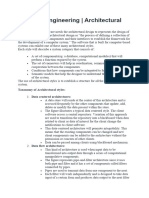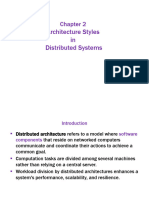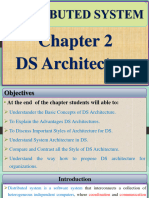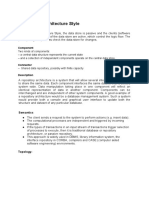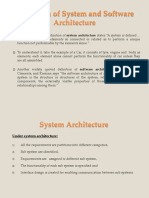0% found this document useful (0 votes)
82 views2 pagesData Centered Architecture
Data-centered architecture focuses on the integrability of data through a centralized data store that interacts with multiple clients. It includes two subtypes: repository, where clients request actions, and blackboard, where the system actively notifies subscribers of data changes. Advantages include data integrity and client independence, though scalability can be an issue, which may be addressed through shared repositories and replication, albeit with increased complexity.
Uploaded by
thorat_496512597Copyright
© © All Rights Reserved
We take content rights seriously. If you suspect this is your content, claim it here.
Available Formats
Download as DOCX, PDF, TXT or read online on Scribd
0% found this document useful (0 votes)
82 views2 pagesData Centered Architecture
Data-centered architecture focuses on the integrability of data through a centralized data store that interacts with multiple clients. It includes two subtypes: repository, where clients request actions, and blackboard, where the system actively notifies subscribers of data changes. Advantages include data integrity and client independence, though scalability can be an issue, which may be addressed through shared repositories and replication, albeit with increased complexity.
Uploaded by
thorat_496512597Copyright
© © All Rights Reserved
We take content rights seriously. If you suspect this is your content, claim it here.
Available Formats
Download as DOCX, PDF, TXT or read online on Scribd
/ 2








